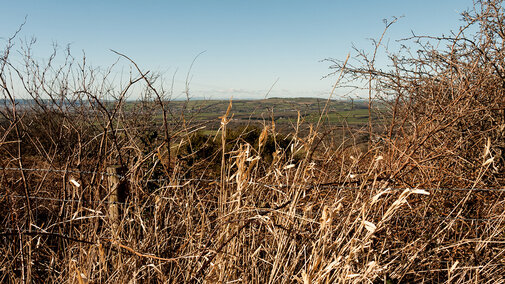Looking Back at 2024
As the new year begins, it is important to look back at pasture and forage production conditions to understand what to focus on for the coming year.
As of late October, much of Nebraska was in moderate to extreme drought. The exception was in southwest Nebraska with approximately 13% of the range and pastures in good to excellent condition. This compared with 63% across much of the remainder of the state being in poor to very poor condition. Like 2023, managing forage and pasture production during drought conditions was also the story for 2024.
The eastern third of Nebraska began dry again this year. In some areas, this meant that forage and pasture production has been below average for two years.
There were other areas where timely summer precipitation resulted in sustaining summer forage and pasture growth. The central part of Nebraska, including the Sandhills, fared much better than other areas of the state. Timely precipitation in April, May and June resulted in good grazing conditions and hay production.
Thankfully, some areas received rain this fall, but it was too late to provide much forage growth. The bottom line is that pasture and forage production could be challenging, especially during early 2025 for eastern Nebraska and the Nebraska Panhandle.
Looking to 2025
As we kick off the new year, people often take time to look back on the past and make plans or resolutions for what’s to come. We can do our own planning for forage production in 2025
First, with an extremely dry end of summer and fall, a lot hangs on moisture this spring. While some late precipitation in 2024 helped, a dry spring can swing the scales back quickly. Any forages planted in the fall without ample irrigation will have a slow start. If conditions do turn dry, have a plan now for adjusting pasture turnout and grazing plans.
On the flip side, if conditions improve, be ready to take advantage. Pasture fertility during challenging years can often be pushed to the back burner, so take a look at the last time you soil sampled your fields. If it’s been a while, consider doing some testing this spring. A small imbalance in fertility can end up with major implications on yield.
Speaking of small changes, encroachment of woody plants like cedar trees continues to be a top issue for pasture and rangeland statewide. However, the start of an infestation — when it’s easiest to control — can be easily missed. If you don’t have one yet, consider setting up a formal monitoring plan to help catch small shifts in your grazing resources that can have big impacts over time.
Finally, annual forages are always a great option to provide fixability and increased production to a forage plan. However, they hinge on one big thing — having seed available to plant. Seed supplies fluctuate annually. Last year saw low supplies for common clovers and sorghums, often driving up prices, which should improve this year. However, improved clovers may still be tight. If you know you’ll need a specific variety, it’s never too early to start checking in.

